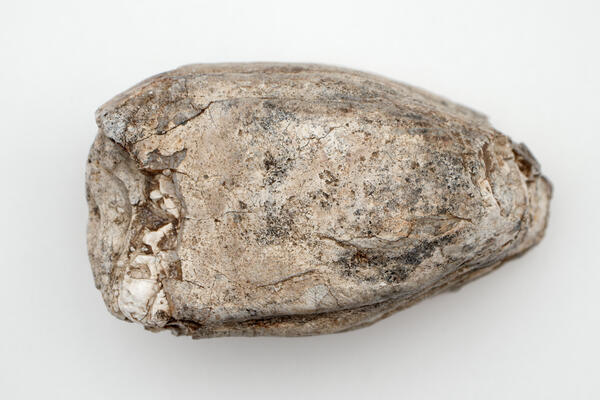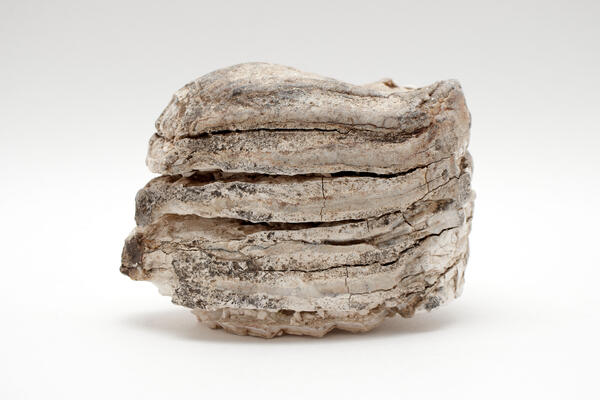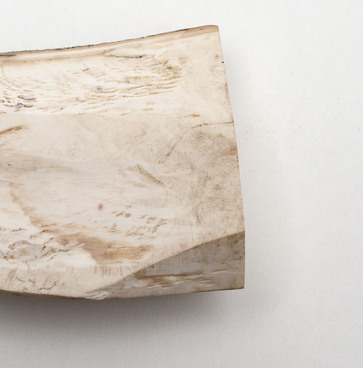This is a mammoth’s grinding tooth. It has a ribbed surface with protruding ridges. Apart from tusks, mammoths had only four teeth — two on each side of the jaw. By examining a mammoth’s tooth, scientists can determine the age of the animal, what they ate and the state of their health.
Mammoths ate coarse plant food: branches, frozen grass, tree bark and even underground ice. They initially had milk teeth, which were then replaced by permanent ones. The teeth gradually ground down and fell out, and new ones appeared in their place. New teeth were formed at the back of the jaw and gradually shifted to where the old ones were. During their lifetime, mammoths changed their teeth up to six times. If an adult animal lost all its teeth, it died of hunger.
Mammoth teeth are used as material for making souvenirs and crafts. Their rigidity is compared to that of the stone. The uniqueness of each mammoth tooth is determined by its special structure, color and shape. However, for decorative and applied arts, mammoth tusks are used more frequently.
Mammoths appeared about 5 million years ago. They were the largest animals of the Pleistocene fauna, which also included wooly rhinoceroses, horses, musk oxen, and cave lions. Most mammoths became extinct about 10 thousand years ago, although some human-sized species existed even during the construction of the Great Pyramid of Giza.
The main reasons for the extinction of mammoths are climate change and changes in food sources during the Ice Age, as well as overhunting by humans. Many myths of the northern peoples are associated with mammoths. Komi, Nenets, Mansi and Khanty peoples called them an “earth deer”. They believed that the mammoth was so huge and heavy that it fell through the ground, thus creating riverbeds and lake pits. Mammoths are the main characters of cave paintings of prehistoric people around the world.
Archaeologists still find numerous well-preserved mammoth remains in permafrost layers, so the anatomy of these animals is well researched. Mammoths are an extinct species that belonged to the Elephantidae family of the order Proboscidea, Mammalia class. Their height was comparable to that of a modern African elephant but they weighed twice as much.




